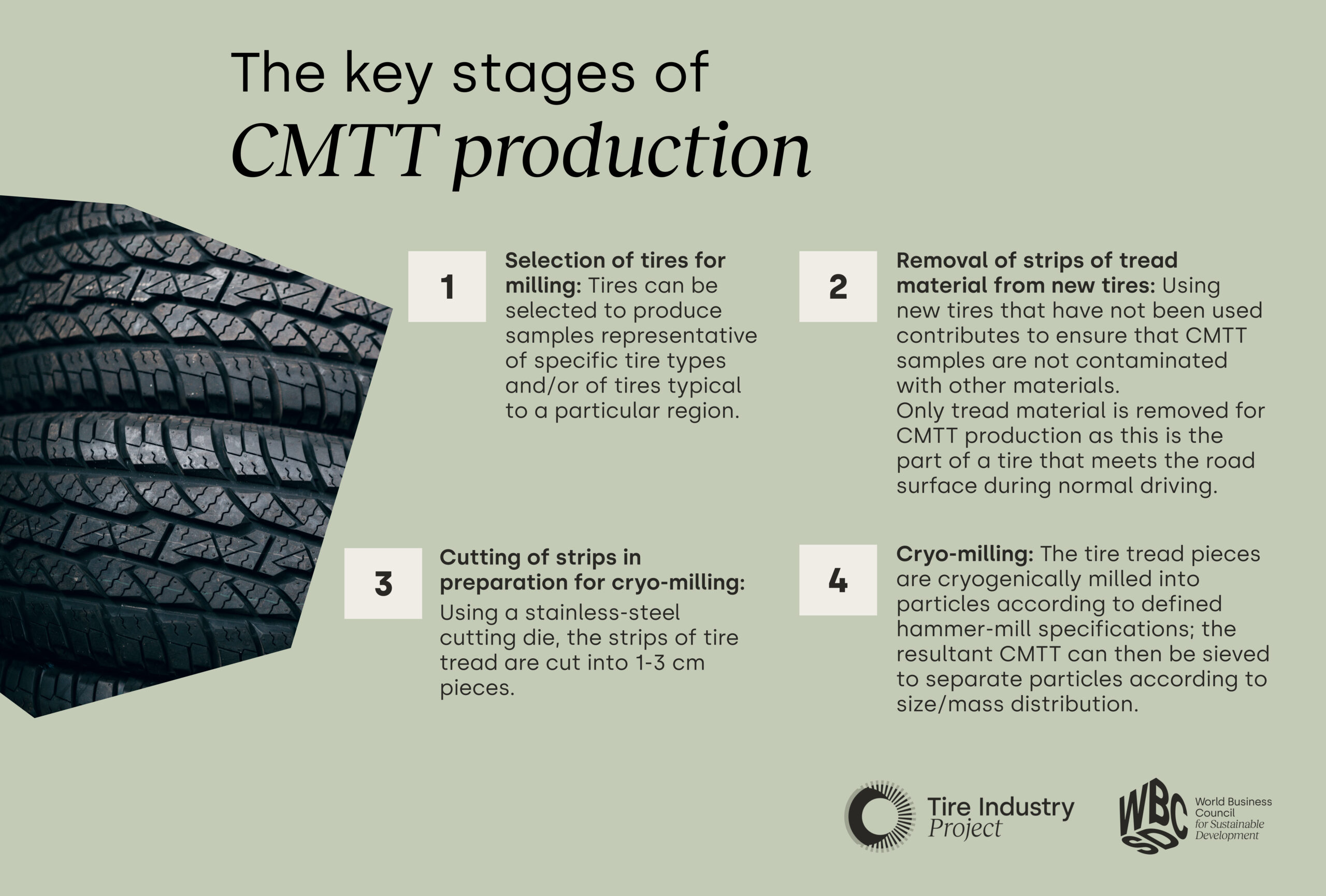Tire test-
materials for
research
Advancing tire and road wear particles research with cryogenically milled tire tread (CMTT)
Cryogenically milled tire tread (CMTT) offers a surrogate test material for tire and road wear particles (TRWP) research that does not contain elements from the external sources that tires are exposed to during normal use. CMTT is not a direct replacement for TRWP in all research applications, but it does allow researchers to isolate and focus on the tire tread component.
CMTT is the product of a standardized and reproduceable laboratory process developed by the Tire Industry Project (TIP), that cryo-grinds (or cryo-mills) tire tread to simulate the tire particles that are generated by the friction between tires and road surfaces during driving. The cryo-milling technology minimizes any chemical transformation changes to the particles. CMTT is comprised of tiny pieces of the vulcanized rubber compound found in tire tread but does not contain elements arising from pavement or any interactions with pavement.

With more than a decade of experience researching TRWP and producing tire test materials, TIP recognizes the scientific importance of representative test materials. TIP created the CMTT methodology to support research on tire wear by providing a reliable and affordable material for lab experiments.
Using the TIP methodology, the U.S. Tire Manufacturers Association (USTMA) launched an initiative to produce CMTT and provide samples to researchers. The initiative was presented during a special breakout session of the 42nd Annual Meeting of the Society for Environmental Toxicology and Chemistry (SETAC) North America (14-18.11.2021). Researchers can request CMTT samples via the USTMA website.
In making this material available to researchers, the tire industry is contributing to improve access to appropriate materials for TRWP research.
Comparing CMTT and TRWP
CMTT is not a direct replacement for TRWP. The following table outlines key differences between the particle types:
Consideration | TRWP from road simulator | CMTT |
Representativeness | Most representative of tire and road wear particles generated during driving. | Representative of the composition of the tread portion of TRWP. Not representative of TRWP full size distribution or morphology; may not account for thermal degradation or oxidation of tire chemistries occurring during wear. Does not include road particles or other road debris/dust. |
Applications | Appropriate for most scientific study pertaining to tire-use conditions. | Most applicable for studies where size distribution and morphology is unlikely to impact interpretation; if used in other applications, limitations/uncertainties regarding size should be discussed/acknowledged. |
Tire Selection | Passenger car and light truck tires can be used in the road simulator; cannot currently accommodate truck or bus tires. May need to supply rims on which to mount the tires. | Passenger car, light truck and truck/bus tires can be selected. |
Feasibility | Few laboratories can generate; collection efficiency is low, therefore long collection times necessary; likely to be infeasible when large amounts of particles are needed. | Time consuming to remove only tread compound but can generate large quantities of tread particles. To avoid water jet for cutting, need to use industrial sheaers or a custom die to use in stamping machine. It is relatively easy to produce large numbers of particles using commercial mills. |

